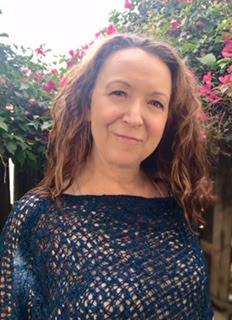
Afterglow by Maxfield Parrish
A few years ago, Ram wrote a lovely post on yoga and positive psychology. He spoke of positive psychology as a new and burgeoning field of study, pioneered, in its current incarnation, by Martin Seligman and Mihaly Csikszentmihalyi. A serious yoga practitioner for decades, I was at the time just beginning to immerse myself in the study of positive psychology, and his thoughts on the connections between this area of psychology and yoga resonated strongly with me; I also found profound connections between the two disciplines.Now, having earned my Master's degree in Professor Seligman’s seminal program at the University of Pennsylvania, I can say with more authority that Ram got everything right, even down to his guide to pronouncing Professor Csikszentmihalyi’s daunting name. I love what he had to say about how we yogis experience the sense of immersion and timelessness, defined by Professor Csikszentihalyi as flow, when we practice. This is one of many connections that can be made between both the study and practice of yoga with positive psychology, and here, in this series of posts, I would like to explore some of the others.I trace my original interest in positive psychology to a time, years ago, when I happened to hear a story on the radio about the happiness set point theory, the idea that some or perhaps all of our capacity for personal happiness is rooted in our genetic brain chemistry. This brand-new (at least to me) concept struck me as very plausible, and my initial thought was how fortunate I was, as I recognized my own capacity for happiness was on the higher side. Just a little more thought, though, had me questioning to what extent my years of daily yoga practice might have affected that capacity and “set point.” Like many—perhaps most—modern practitioners, I originally came to yoga for the physical exercise and health benefits, and I didn’t question or look deeply into the profound boost to my overall well-being I found there; it all got filed under the general category of “feeling good.” I hadn’t even been particularly interested in yoga when a friend pretty much dragged me to my first class some 30 years ago, but afterwards I could hardly believe how great I felt. This was the hook that kept me coming to yoga classes, and then led me to develop my own personal yoga practice at home, something that over the years became a cornerstone of my life. The deeper psychological and/or spiritual (depending on your orientation and point of view) aspects of yoga snuck into my consciousness gradually and organically as I stuck with the practice and became serious about it. The desire to share these benefits and contribute to others’ well-being is what eventually brought me to teaching. Once that set-point theory was brought to my attention, the chicken-versus-egg question it sparked about the link between happiness and the mind/body connection stayed with me. Even to this day, the difference I feel before and after practicing can astonish me. In addition, it wasn’t long into my practice that I understood the benefits I was realizing were cumulative as well as immediate. No matter what else is going on, a week with more practice time is better than one with less. When I compared what seemed to be my personal set-point—my tendency to be in a good mood and general orientation toward being a cup half-full person—with family members who presumably were genetically similar to me but struggled more with emotional equilibrium, I had to wonder what accounted for the difference. Yoga was such a consistent and positive part of my life that the possibility it was affecting my brain chemistry was one possible reason. This also raised some interesting questions for me about the overall connections between physical health and mental/emotional well-being. I gradually realized this was something I wanted to investigate. While looking for classes in health psychology, I happened upon an introductory positive psychology class offered through U.C. Berkeley extension, and I knew immediately it was for me. This intuition was affirmed throughout the 15-week course, which I found both fascinating and inspiring. It was in this class that I read Seligman's book Flourish and learned about the Master’s program he had developed and helmed at the University of Pennsylvania, which I later applied to, attended, and ultimately completed in fall 2016. I came to UPenn’s MAPP program with the intention of studying and writing about happiness and the mind/body connection. What I quickly learned was that this, and anything to do with the body and our physical experience of life, is a very recent area of study in positive psychology, which is itself a relatively new field. Positive psychology is the study of human happiness, often referred to as subjective well-being in academia, and of how we find fulfillment and meaning in life. While I was in school and would mention I was studying positive psychology, a common question, often asked ironically and with amusement, was “As opposed to negative psychology?” Well, yes. Although psychology is the overall study of the mind, it was developed mainly to study and find solutions for mental illness and pathologies, and this is largely where the focus remained for the first 100 years. This is understandable; human evolution gave us a negativity bias (which I will explore in more depth in a future post) to be alert to threats and better help us survive them. Positive emotions and experiences are, in evolutionary terms, secondary to basic survival. And there is no denying that mental illness is a serious cause of suffering for both individuals and society as a whole and requires serious attention. Beyond that, however, there is a whole spectrum of human happiness, achievement and even transcendence to be explored. This is the realm of positive psychology: What is it that is happening when things go right, psychologically speaking? What can we learn, and teach, about the positive side of the human experience? How can we build on that knowledge to create more happiness and fulfillment for individuals, and can we expand from there to develop more positive, harmonious functioning of organizations and societies? How, in short, can we create more happiness and authentic positivity in the world? Although this may be slowly changing, the concept of mind/body dualism, or the idea that mind and body are separate—and that the mind is inherently superior—is a strong, pervasive bias in academia. For this reason, there have been two parallel tracks, positive psychology and mind/body science, for quite some time. Again, this is changing, largely because of those, like me, who recognize that there are many places where these two disciplines intersect, and also that our experience of happiness, and indeed, of life itself, is inseparable from our physical embodiment. In fact, as science is rapidly discovering and recognizing, there is no discernible separation between mind and body, and there is a growing push in positive psychology to add the physical dimension to the definition of flourishing. My work in the field largely centers around the robust and growing connections between these two formerly separate tracks, and my belief that conceptualization of mind and body as separate is an entirely false construct. We are, each of us, one amazing and fully integrated system, operating on a continuous mind/body feedback loop. While we commonly refer to this as the mind/body connection—a term that reflects how ubiquitous the idea that they’re separate is — I would actually characterize it as the complete interconnection and integration of mind and body. We yogis experience this profound sense of integration for ourselves through our practice. While hatha yoga may be defined as a physical activity, the majority of practitioners recognize that the sense of well-being we feel after practicing goes far beyond the physical. And few would deny that feeling better in our bodies refreshes our minds, elevates our overall moods, and brightens our days. Although yoga is popularly associated with the body and the physical practices of asana and pranayama, the broader system of yoga is also, like psychology, the study of the mind. It could even be considered one of the precursors to modern psychology.Disciplines such as yoga that aim to support body, mind, and spirit have moved from the fringes to the mainstream over the past couple of decades, as both direct experience and academic and medical research have given credibility to the purported holistic value of these practices. When I posted this Harvard Medical School article about the health benefits of yoga on Facebook recently, another yoga teacher commented “I don’t need science tell me yoga is good for me. My body/mind tells me every day.” I agree! Yet both the validation and the specific information that science can give us are useful. While I didn’t need science to validate my experience, positive psychology has been very helpful in giving me language to explain it. Prominent positive psychologist Barbara Frederickson, an expert on positive emotions, coined the term “upward spiral,” which is a kind of escalating positive feedback loop that occurs when an activity gives us a felt boost in our well-being, which then bolsters our motivation to repeat that activity. This was very much my experience when I was developing my yoga practice. When people have remarked on my “great discipline” in sticking with my practice for so long, I’ve long replied that it’s not self-discipline, it’s motivation, and I’m keenly aware that there is a distinct difference. My practice has always been based on, as we say in positive psychology, intrinsic motivation rather than any sense of obligation. I was delighted to discover that there has been extensive work done in positive psychology that has delineated various types of motivation, as well as what one leading scholar terms passionate engagement with an activity, and has studied their different outcomes. Three decades and counting since my first encounter with yoga, these positive psychology concepts describe my experience and process exactly and explain the reasons that I have remained so consistently motivated to come to my mat more days than not in any given week. It starts with the reliable, immediate, and profound boost to my well-being, body and mind, that comes from practicing. On top of the in-the-moment benefits, this consistent experience continuously reinforces and increases both my motivation and passionate engagement. It helps get me through the plateaus and inevitable days or weeks of resistance or boredom. Most compelling, perhaps, it has also helped me develop both confidence and self-reliance as I’ve learned how significantly I can affect my own happiness, and whether I have a good day or a lousy one. This is the stuff of positive psychology, and why yoga has been, for me, a happiness practice.

Sandy's writing has been published in Yoga Journal, Yoga International and Ascent magazines, and she is the author of two books, Yoga For Healthy Knees and Yoga For Computer Users, both currently available from Shambhala Books. Having earned her Master's Degree in positive psychology from the University of Pennsylvania in 2016, Sandy is now working on a new book about positive psychology, wellness and mind/body integration. An expert in workplace wellness, she has spoken at Kaiser and Google, and works as a wellness coach and consultant for Pixar Animation Studios as well as serving as their resident yoga instructor.
More information about Sandy’s work is available on her website www.sandyblaine.com.Subscribe to Yoga for Healthy Aging by Email ° Follow Yoga for Healthy Aging on Facebook and Twitter ° To order Yoga for Healthy Aging: A Guide to Lifelong Well-Being, go to Amazon, Shambhala, Indie Bound or your local bookstore.

